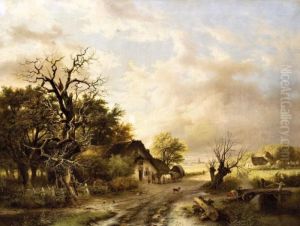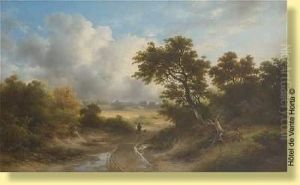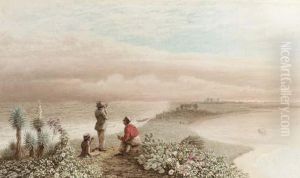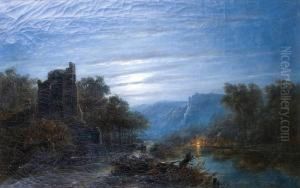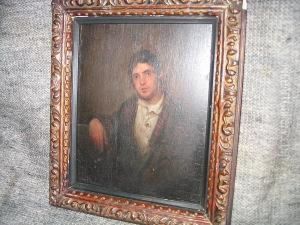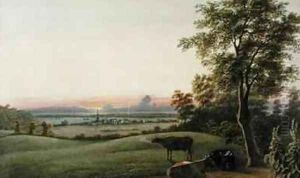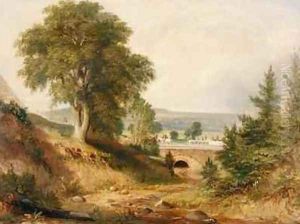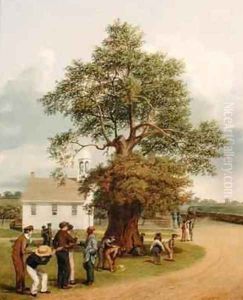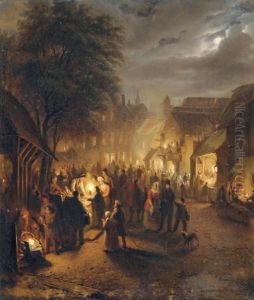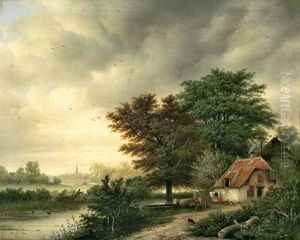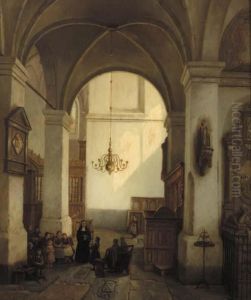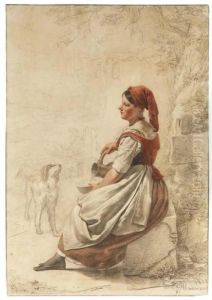George Harvey Paintings
George Harvey was a British-American painter known for his scenes of American life and landscapes. Born on July 31, 1800, in St. Andrews, Scotland, Harvey exhibited an early interest in the arts. He was initially trained as an artist in Britain, but his career truly blossomed after he moved to the United States around 1820. Harvey's work is often associated with the romantic movement, which emphasized emotion and individualism as well as glorification of the past and nature.
During his time in America, Harvey traveled extensively, capturing the essence of the American countryside and its inhabitants. His paintings often depicted rural settings, agricultural life, and small towns, which he rendered with a high degree of detail and a keen eye for the nuances of light and atmosphere. Harvey was particularly adept at using light to enhance the mood of his compositions, a skill that made his work resonate with audiences seeking a nostalgic view of America during a time of rapid change and modernization.
Although not as widely known as some of his contemporaries, Harvey's work was appreciated in his time, and he earned a living through the sale of his paintings and by producing illustrations for books and periodicals. His attention to detail also led him to create a series of weather diaries, in which he meticulously recorded daily weather conditions, observations that often informed the atmospheric effects in his artwork.
George Harvey's contributions to American art were recognized during his lifetime, and his paintings continue to be studied for their historical value and their serene, idyllic portrayal of 19th-century American life. Harvey passed away on February 22, 1878, in Cranford, New Jersey. Despite the relative obscurity in the modern era, his work is held in various public and private collections, serving as a window into America's past and a testament to the skill of this transatlantic artist.
